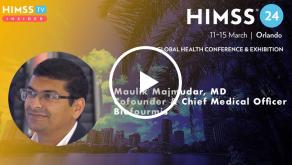Key to predictive analytics in population health: planning and flexibility

While the development of accurate predictive analytics has the potential to head off debilitating and costly conditions among patients, one veteran of the burgeoning field says it’s important not to rush in without the proper planning.
"The first thing to understand is you need to have the right technical infrastructure components in place and it has to address what you are looking to do with it," said David M. Seo, MD, associate vice president of IT for clinical applications and chief medical informatics officer for the University of Miami Health System.
"But there is a lot people don't think about – like data curation and quality," he said. "Is the data you have good enough to even do predictive analytics? Because if it isn't, that prediction may actually harm you more than it helps. You may go off on a wrong tangent."
Seo and Chitra Raghu, senior program manager and innovations officer for Lockheed Martin Health and Life Sciences, presented will be presenting the U of M system's experience in preparing its predictive analytics platform in "Predictive Analytics Drives Population Health Management" at HIMSS16 on Tuesday.
Beyond the quality of the data itself, Seo said other factors, including the presence or absence of skilled data scientists; a thorough understanding of how to localize predictive models from other health systems; and how to best integrate existing investments in electronic health records with analytics technology, must be carefully considered before pulling the trigger on new platforms.
"There are so many technologies," said Raghu. "You have to find what is the right one that will help hospitals achieve what they are trying to achieve, at the lowest cost."
Seo added even health networks with a dozen or more hospitals are not likely to already have the necessary skill sets in-house. And even a platform that offers great analytics capabilities, for instance, may not be popular with either clinicians or financial executives if the caregivers need to toggle back and forth between an EHR and an analytics platform.
"If I'm looking at a patient in front of me right now, I don't have time to go somewhere else, and when I've gone somewhere else I've already lost the advantage of this massive investment in my EHR,” Seo said. “So it has to be part of your system's ecosystem."
The session "Predictive Analytics Drives Population Health Management" is slated for March 1 from 2:30-3:30 p.m. in, Palazzo I at the Sands Expo Convention Center.
























